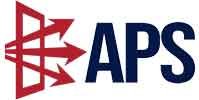This HVAC case study examines the heating control systems in the oldest high school in Peterborough, Ontario, and proposes energy-efficient improvements. The school employs a mix of heating systems: hot water radiators, steam radiators, a multizone system with shared cold and hot decks, and a fan system with reheat coils. The study highlights inefficiencies in the original control designs and suggests conservation measures to enhance energy performance.
The proposed upgrades focus on optimizing temperature controls, particularly through night setbacks, and improving zone-based heating and cooling responses. Graphs illustrate reduced energy input by adjusting hot deck temperatures and ventilation based on zone demands. Energy reduction charts reveal a payback period of under a year, showcasing significant cost savings. Additionally, similar results from other schools in the Durham and Scarborough Boards of Education underscore the broader applicability of these improvements. This case study demonstrates the effectiveness of targeted HVAC modifications in reducing energy consumption and operational costs.
The chart below highlights the significant energy savings.


